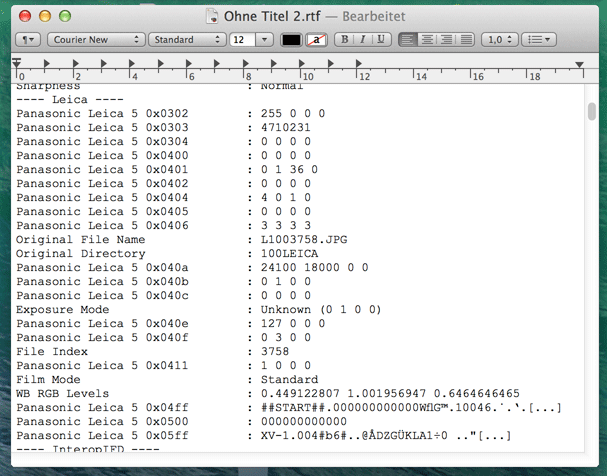
How to edit exif metadata on mac exiftool full# I decided to follow most of Federico Viticci’s photo workflow and go for near Camera Roll Zero. I use Camera Sync on the iPhone to upload all my photos to Dropbox and use Hazel to rename and sort them based on their metadata.

Similar to Federico, my Hazel rules delete screenshots, since I generally don’t want to keep them, but I also have Camera Sync set up not to upload screenshots anyway: Once uploaded I keep a handful of photos of my family on my iPhone, but otherwise delete all the others. The files are also renamed with date and time, such as “ 3.08.29.jpg”: Then I have a rule to sort the photos into date based folders, by year and then simply date. Videos are renamed and sorted into a video sub-folder of each year:ĭeadly exciting, I know, but I’ve wasted so much time searching for photos and so much drive space with duplicates that the time spent getting this to work has been fantastic for me. I usually have a pretty good memory of roughly when important events happened in life and there are plenty of ways to view folders of images as thumbnails (see Federico’s article for a round-up of these). Duplicates are now easily spotted, because they are in the same folder with the same filename (a number is appended if filenames are identical). This approach has one major drawback, enforced upon it by other apps. It relies on accurate file creation dates and EXIF data – the metadata stored in all image files. Sometimes this data is missing or incorrect. My Hazel rules sort files based on their creation dates. One of the previous photo storage cloud services – either Loom or Everpix (the culprit, I think) – re-stamped the file creation dates. This meant I had a bunch of different images all with the same creation dates and, thus, all the same filename if I ran my Hazel rules on them. I thought I could probably recover the proper dates by using the EXIF data. How to edit exif metadata on mac exiftool full#.How to edit exif metadata on mac exiftool how to#.find /path/to/top/directory -name '* * *.

To process all the files in a directory and its subdirectories recursively, use find. #!/bin/shĮxiftool -Author="$author" -Title="$title" -CreateDate="$year" "$filename" To process all the files in a directory, put that code in a loop. #!/bin/shĮxiftool -Author="$author" -Title="$title" -CreateDate="$year" "$1"Įxplanation: I use parameter expansion constructs to perform some basic string processing: put the base name (after the last /) into title put the part up to the first space into author and remove that from title repeat with the year. Here's a script that processes just one file (pass the name as the sole argument of the script). So let the shell call the program with the right parts of the file names. Some EXIF manipulation tools have a built-in way to rename files based on EXIF data, but I don't know of one that can do it the other way round.


 0 kommentar(er)
0 kommentar(er)
